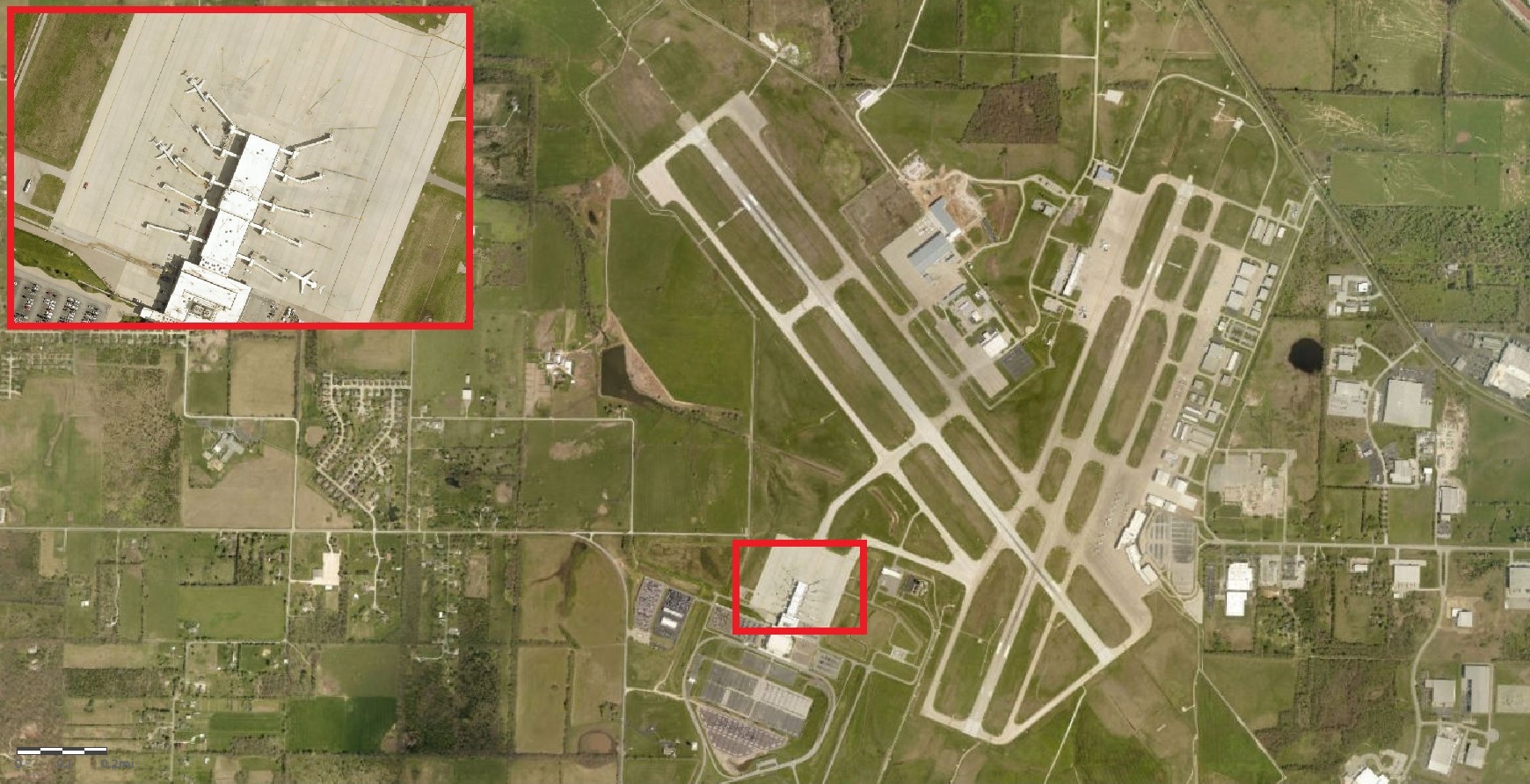Ten years into its 20-year master plan, the staff at the Springfield-Branson National Airport is reassessing its future needs amid record volumes of passengers and cargo.
Springfield Director of Aviation Brian Weiler and consultants from the engineering firm Crawford, Murphy and Tilly (CMT) outlined those needs to members of the Springfield City Council and Airport Board at an Oct. 31 study session.
The plan details potential demands of every corner of the airport, well beyond the front-facing Roy Blunt Terminal that serves the general public, and is contingent on factors including funding, travel trends and the needs of other tenants operating on airport grounds.
“I think this plan has really struck a great balance between projecting and planning for what we think the next 20 years look like, while also building in an appropriate degree of flexibility,” Airport Board Chair Paige Oxendine said. “And I think, from the board perspective, being able to be flexible and innovative and a little bit entrepreneurial when the opportunity presents itself has been a priority for us.”
Needs depend on demands
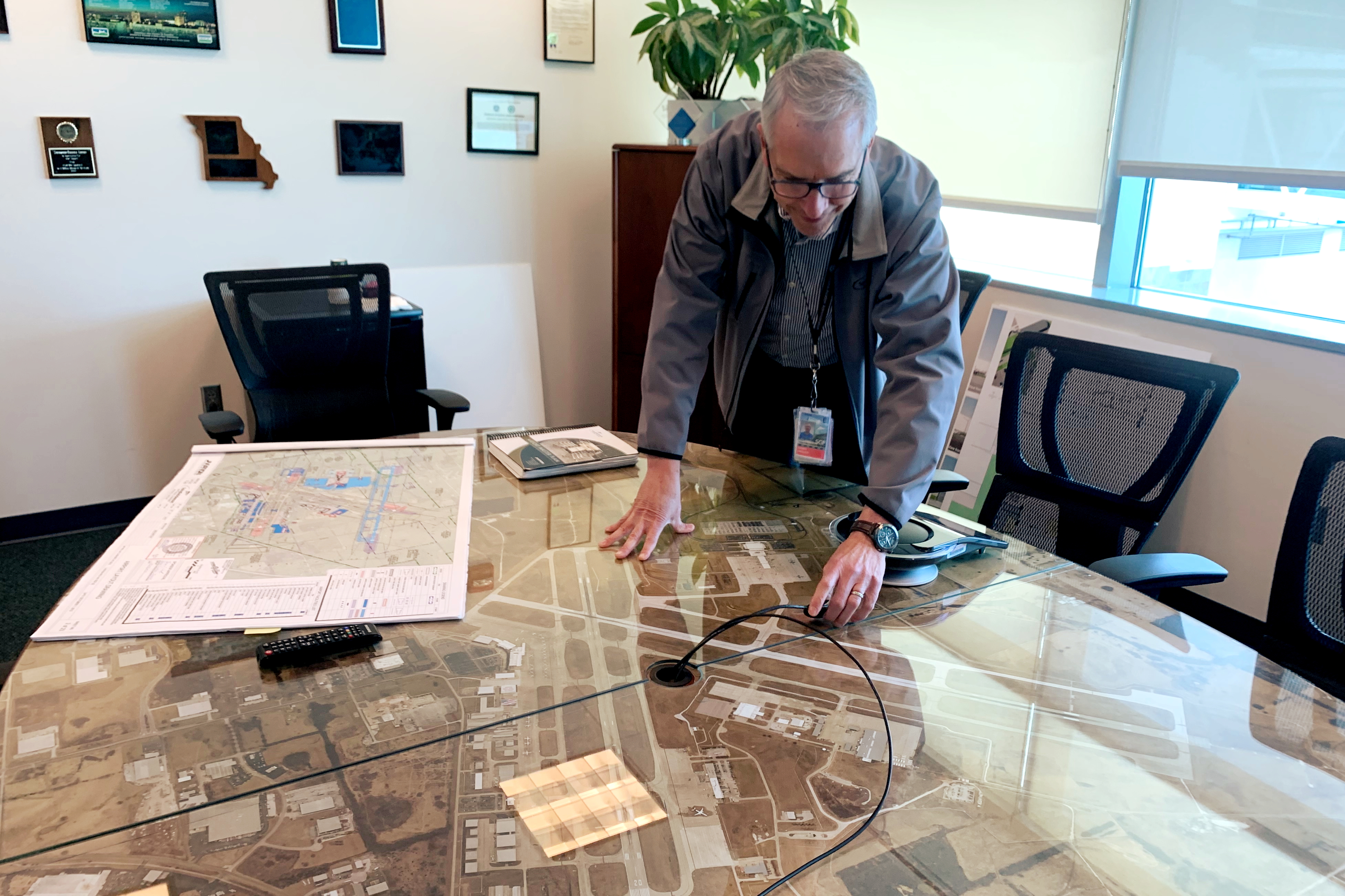
(Photo by Rance Burger)
The updated master plan categorizes projects into short-term and long-term initiatives in the context of needed improvements, future planning and a “constantly-evolving” aviation industry. The master plan is not a “wish list” for the airport, but an outline of how to meet future market needs. Weiler said the plan is guided by data and industry-established best practices.
While only one component of the update to the plan, an expansion — and modernization — of the Roy Blunt Terminal is at the top of the list.
The airport is in the midst of a record year, on pace to shatter passenger traffic records set in 2019, Springfield-Branson National's busiest year. While the existing commercial terminal can handle upwards of 1.8 to 2 million passengers annually, the consultants say it is crucial to explore what an expansion might look like.
Even the most conservative passenger forecast anticipates the airport to accommodate nearly 1.5 million annual passengers by 2041, with the high model projecting about 2 million and the preferred trajectory at about 1.7 million passengers. CMT Aviation Planning Group Manager Doug Gregory said the consultants are likely going to revise passenger forecast models early next year.
Extending the end of the terminal building
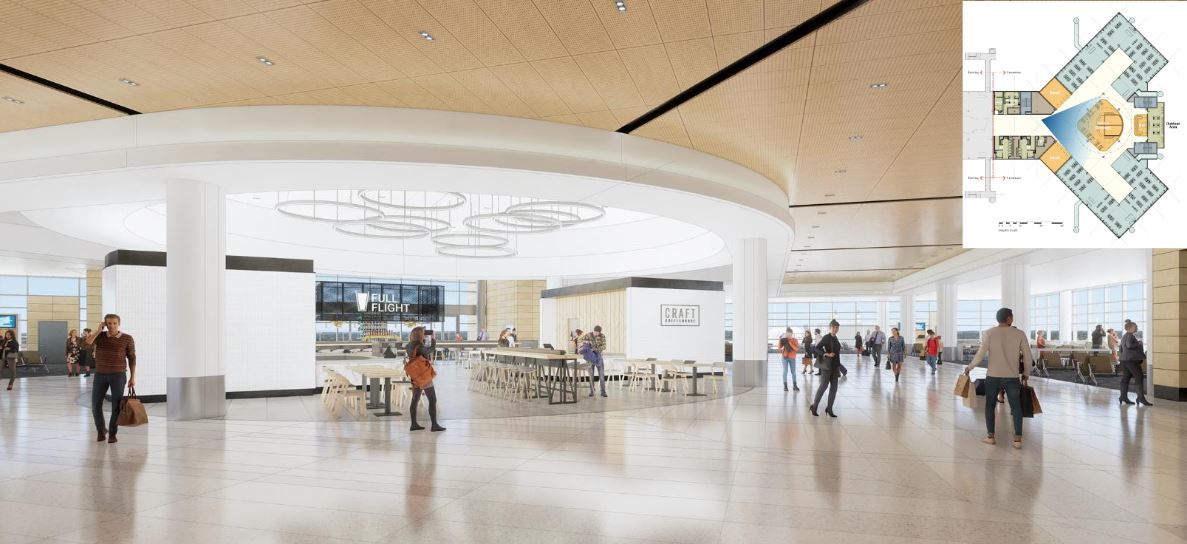
The master plan update proposes a “node” expansion concept in which the northern end of the terminal would split off into two branches, providing space for more aircraft, more passengers and more services.
With more passengers comes the need for more parking. Lot occupancy hovered around 80 percent for much of the summer, according to CMT senior aviation program manager Neil Ralston.
The plan contemplates a parking garage west of the terminal in a space that now houses a surface lot for rental cars. The garage would add 1,800 parking spaces to the airport grounds and would likely incorporate space for rental car companies on the ground level.
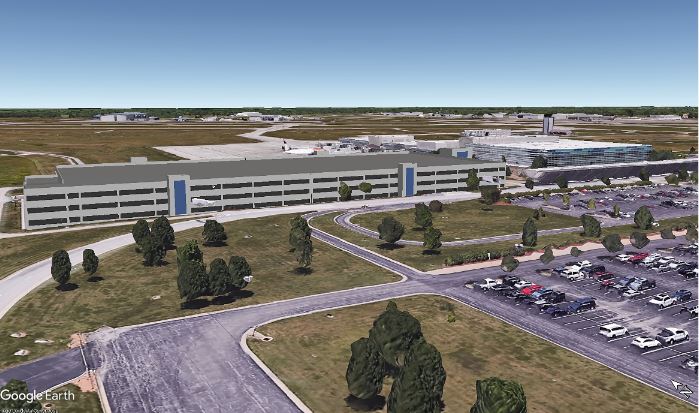
A parking feasibility study would be completed alongside a revised passenger forecast, because the two are linked.
“The decision of a parking garage is not insignificant,” Gregory said. “I mean, that's a huge, significant capital investment, and so making sure that demand is going to kind of meet those needs going well into the future is just as important.”
On the opposite side of the terminal, the plan calls for taxi and bus parking to be put to better use by allowing rideshare service drivers to stage while waiting for passengers.
Potential of “beachfront property”
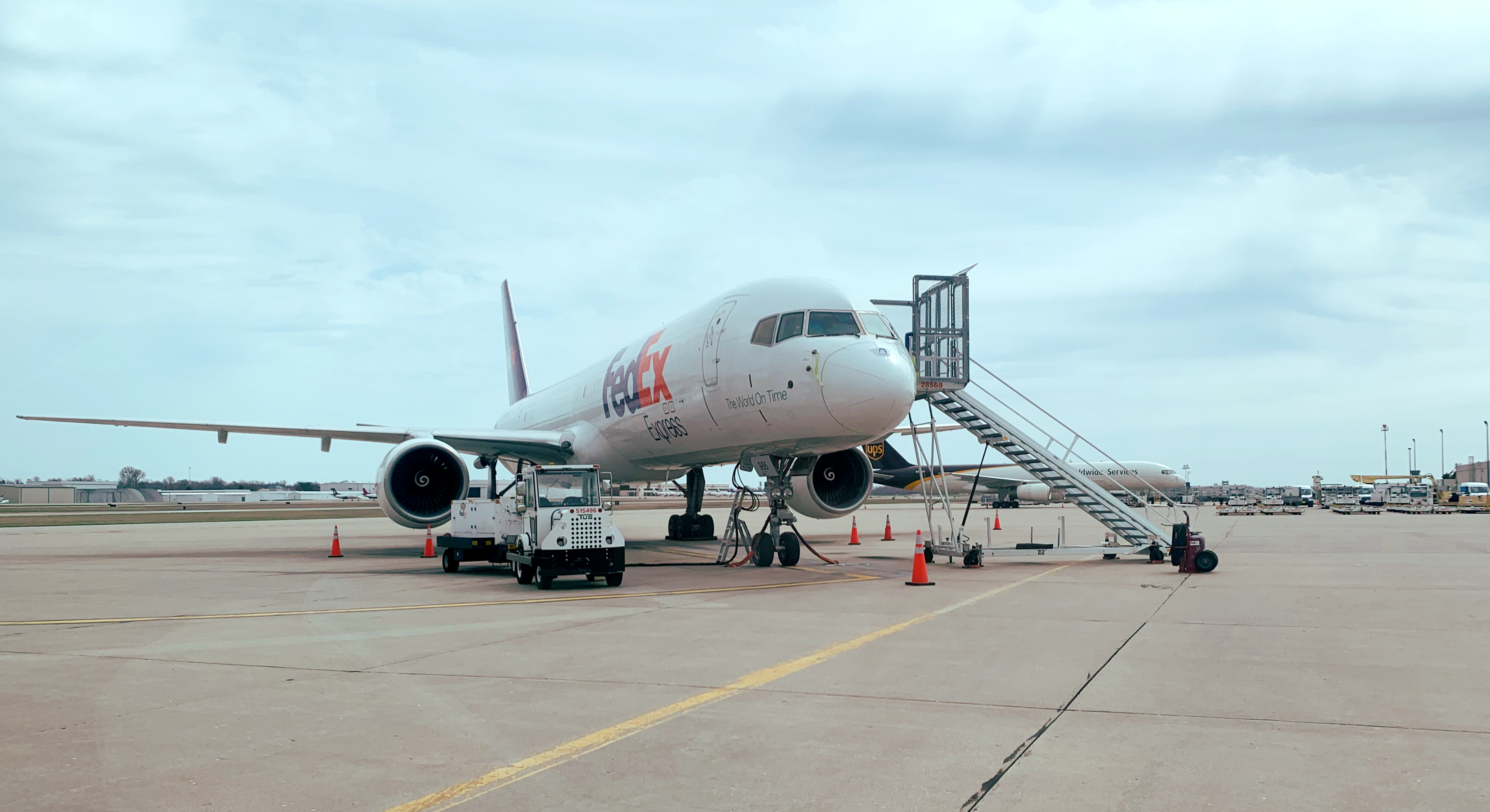
Though much smaller and only open to private plane traffic, the General Aviation Terminal could be a catalyst for development at the airport. With it already undergoing renovations, surrounding land could be filled in with additional facilities, including a new corporate aviation campus. This complex could provide additional hanger storage for private aircraft of all sizes and access to and from Division Street.
The airport’s previous primary terminal, which was replaced by the Midfield Terminal (since named after former U.S. Sen. Roy Blunt) in 2009, is given new life in the master plan.
Though the building is aging, the land it sits on was identified as “beachfront property” in the planning process, an opportunity for redevelopment. The old terminal is currently home to and Expedia operations center, and the travel company's lease runs to 2036. Weiler emphasized that he and his staff hope to be able to provide alternative space to Expedia, whether it be elsewhere at the airport or in a new campus.
On the other side of the airport, cargo demand has also continued to grow for FedEx and UPS. While narrow, the space that hosts cargo planes and repair services is flexible enough to accommodate future demand through expansion.
Supplemented by Ozarks Technical Community College’s under-construction aircraft maintenance facility, Weiler said the airport’s future maintenance and repair capacities “are a real selling point for us as a region.”
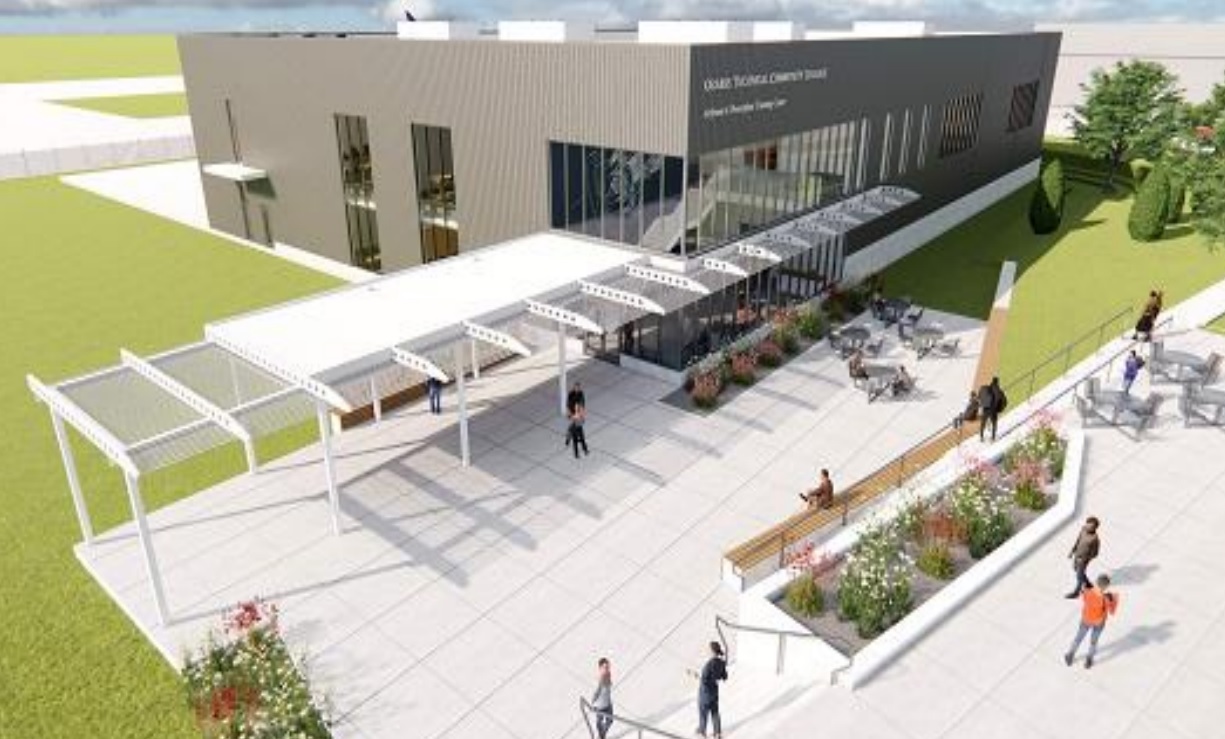
Longer runways part of plan
The plan also identifies a potential future need for a 1,000-foot expansion of existing runways, and an additional parallel runway, though it would likely be out of the scope of the current master plan’s timeframe.
“The beauty is that the runway today, the runway system, has a lot of capacity — but they do intersect,” Gregory said. “And so, you know, philosophically at some point, there could be a situation where those two runways do go down for some unknown reason, right? So having that resiliency of a third runway, or demand just is so high in certain periods of time throughout the day, that it warrants kind of a relief valve for an additional runway.”
The plan also considers future needs of the airport’s Missouri National Guard Aviation Classification Repair Activity Depot, includes a relocation of the facility that stores snow-removal equipment and signals opportunity for development surrounding airport property, all while preserving the zoning that continues to give the airport opportunity for growth.
“I can say pretty easily that Springfield has the best airport protection zoning in the state,” Weiler said. “And having that gives us so many more opportunities.”

Update to plan nearing completion
The proposed update to the plan was presented to the City Council after more than a year of stakeholder engagement group meetings and public input which culminated in a public meeting on Oct. 17.
Though the Federal Aviation Administration has had a seat at the table throughout the entire process and is not anticipated to demand additional significant changes to the update of the master plan, Weiler said the plan will require the FAA's final approval before it can be adopted by the City Council.
Once approved, each component of the plan will be contingent on funding, as well as demand. While owned by the City of Springfield, the airport’s funding is supported by its own revenue streams, along with the federal and state governments.
“We're only going to be able to move as fast as our funding sources allow,” Weiler said.

While Weiler indicated he was open to accepting funding from the city, he said existing revenues, additional grants and potential bonds could finance many of the projects laid out in the master plan.
For example, Weiler pointed to federal funds that will help fund a ramp expansion project. With construction set to begin within 18 months, the new ramp will one day serve an expanded terminal.
“There's never enough money, the number of needs always outpaces the number of what we have resources for,” Weiler said. “But overall, we're in pretty good shape.”
In order to adapt to demand — funding and otherwise for every corner of the airport — Weiler and the consulting team emphasized the need to maintain flexibility in the master plan.
More information on the update to the Springfield-Branson Airport Master Plan can be found here.
